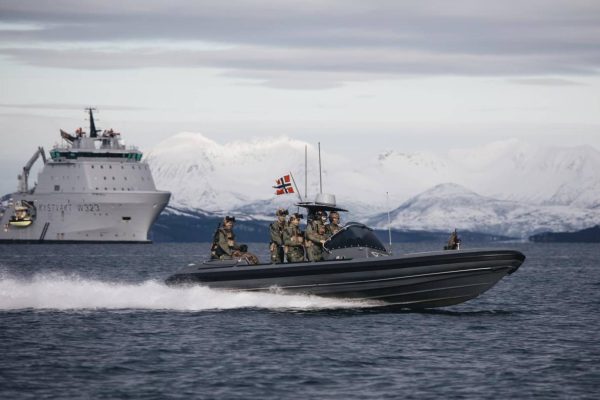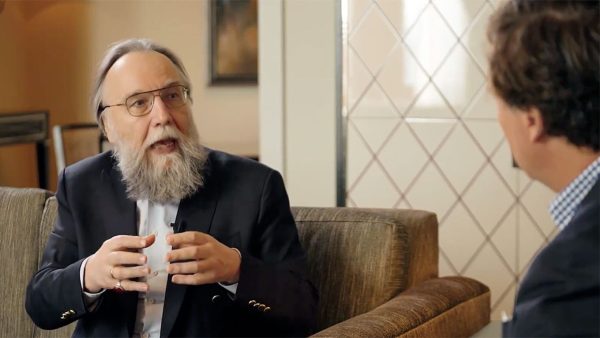After Ukraine’s 2023 counteroffensive failed to achieve its aims, the section of frontline Kherson Oblast to the east of the Dnipro River, in southern Ukraine, is still under occupation.
Two years after the Kremlin’s full-scale invasion, many people forced to live under Russian control are losing hope as the failed counteroffensive combines with a constant fear of being kidnapped, interrogated, and tortured by the occupiers.
In Skadovsk, a port city on the Black Sea with a pre-war population of about 17,000, the occupation administration is trying to cut people off from Ukraine completely. At the same time, the Ukrainian authorities and civil society are doing what they can to support those trapped by the occupation.
Solutions are scarce, not least because any relationship with free Ukraine makes the residents suspect in the eyes of the occupiers, and targets for Russia’s Federal Security Service.
Oleksiy, an activist speaking under a pseudonym, described torture with electric shocks and pliers, as well as beatings with a baton and a hammer after the occupiers checked his cell phone and deemed him suspicious. His experience, recorded in an interview with the ZMINA Human Rights Center, is typical of the methods of terror and intimidation used by the Russians.
Oleksiy suffered beatings with a baton and hammer, torture with electric currents, and tweezers attached to his fingers, which are common practices of the occupier.
The occupiers set up their first torture facility in Skadovsk at the Slava Children’s Camp and took control of the police station, using the basement to hold and interrogate people.
Even doctors and medical personnel, who should be protected by the Geneva Conventions, are not safe from the occupiers. Tetiana Mudryenko, 58, a nurse, was abducted and publicly hanged in front of the court building in fall 2022 because of her pro-Ukrainian views.
Those released from captivity live in constant fear of being abducted again, and some have spoken of being forced to dig graves, not knowing if they were for them.
Oleksandr Yakovlev, mayor of Skadovsk, was captured along with his deputy and the city council secretary, and later released after protests, which were met by Russian forces “shooting into the air and throwing both stun and smoke grenades”. He made it to free Ukraine after a month and a half under occupation and is now working with civil society organizations to maintain communication and provide help to those left behind.
Even though there is no one officially on the ground to carry out the city council’s instructions, and doing so would be extremely dangerous, the authority “in exile” is managing to get some support to those in financial need, he said.
Examples include teachers who refused to teach the propaganda-infused Russian curriculum and hence lost their jobs, Yakovlev told this author in an interview.
“As much as possible, we pay between two-thirds of the salary and the full amount,” he said. “People find ways to exchange hryvnias for rubles and receive the money through relatives in free Ukraine, or through money changers, as no Ukrainian banks operate in occupied territories. Pensioners receive Ukrainian pensions, but older folk often find it more difficult than younger people to find a way to use the money.”
The majority living under occupation in the city have refused to collaborate with the enemy, Yakovlev said, but day-to-day life has to be lived somehow, since evacuation routes were severed following the bogus referendum of September 2022. It is still possible to leave, he added, but anyone doing so risks capture by Russian security forces.
Between 5,000 and 6,000 local residents remain in Skadovsk. The rest of the population are those“evacuated” from the western part of Kherson Oblast by the Russian army, Ukrainians forced to flee the destruction of the Kakhovka dam, or Russians whom the occupiers have settled in homes stolen from Ukrainians.
A popular vacation destination in the past, Skadovsk now stands frozen. Russian propagandist media have tried to tempt people back, showing images of empty beaches, partially de-mined to attract visitors, an unused amusement and water park, and the deserted central streets of the city.
The economy of a city so reliant on tourism has collapsed, forcing local farmers to sell their products below cost as the purchasing power of the population is so low. Supermarket shelves are filled with low-quality Russian products that most people can’t afford, Yakovlev said.
The warehouses at Skadovsk port are used by the Russian army to store ammunition, while sanatoriums and schools are used as barracks for military personnel. In November, a group of former Wagner fighters were transferred to a camp near the city.
Two years into the occupation, Russia’s chokehold on the local population of Skadovsk is as strong as ever.
And the evidence on the ground bears out a UK intelligence report of April 2023 that Russia was accelerating the integration of occupied Ukraine “into the bureaucracy of the Russian Federation to help paint the invasion as a success, especially in the run-up to the 2024 presidential elections .”
The occupying authorities in Skadovsk have forced Ukrainians to take Russian passports to support the myth that the occupied territories are part of Russia.
Russian citizenship is even forced on children as young as 14, according to the National Resistance Center. If the parents refuse, they must pay a fine or are threatened with the loss of parental rights, the Ukrainian Helsinki Human Rights Union (UHHRU) reported.
Social and welfare payments from the Russian government are only available to those with Russian papers, Yakovlev said. “Local services – medical, legal, property – are also exclusively for those with Russian citizenship,” he told the author.
Residents have been forced to re-register their cars, which requires Russian citizenship, and those that still have Ukrainian license plates are regularly searched, as are the homes of those who refuse to trade in their Ukrainian passports.
International humanitarian organizations have failed to investigate whether the laws of war are being obeyed in areas under Russian occupation and have failed to monitor and report on the treatment of Ukrainian POWs properly, Yakolvlev said.
Although it is in direct contradiction to Article 4 of the Geneva Convention, the issuing of Russian passports means Ukrainians in the occupied territories can expect to be mobilized into the Russian Army, as they have been in Donetsk and Luhansk.
While the Kremlin carries out war crimes behind what seems to be a near-impenetrable curtain of occupation, the only way out is through Ukraine’s military advance, now hindered by a lack of external support and supplies.
Kateryna Panasiuk is an author and journalist studying politics at the Ukrainian Catholic University. When war came to Ukraine, she set up a volunteer project to collect and share the stories of Ukrainians affected by the war.
Europe’s Edge is CEPA’s online journal covering critical topics on the foreign policy docket across Europe and North America. All opinions are those of the author and do not necessarily represent the position or views of the institutions they represent or the Center for European Policy Analysis.





